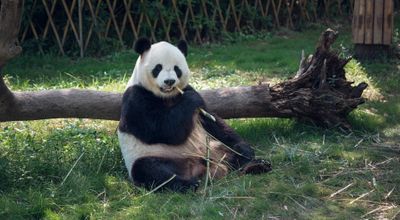There is convenient approach to the temple through Gaoshengqiao stop on metro line 3. Regular as well as dedicated sightseeing buses also make trips to the Wuhou temple. There is a RMB50 entrance charge (half for teenagers and free for children under 4 ft) and the attraction isn’t super crowded so you can just wander around at your own pace. The timings from May – October are 08:00 to 20:00 whereas, in winter (November – April) timings shorten from 08:00 to 18:30. You will need a translator app to understand the majorly Chinese inscriptions and be able to appreciate the history and importance of the attraction.
Once inside, you are greeted by 6 stelas with the largest one called the Triple Success Tablet, which is a tribute to three famous personalities of the region. Inscribed on it is an article by Pei Du, a successful minister who saw the rule of four emperors and was an advisor to them all. There is calligraphy by the most revered calligrapher in all of Chinese history; Liu Gongquan. And lastly, there is an ode to the accomplishments and personality of Zhuge Liang.
The first building is the Temple of Emperor Liu Bei, with a statue of the king and his son and grandson on his wither side. Going forward and a few steps down, to denote a lower rank, is the Temple of Zhuge Liang. There are statutes of the minister and his offspring inside. What is interesting is the writing on the roof which reads as advice from Zhuge to his son about simple living and peaceful thinking. The next step of the journey stops at Sanyi Temple which is dedicated to Emperor Liu Bei and his most trusted officials, Guanyu and Zhangfei and the promise of brotherhood that they lived by.
Rounding up at the western end is the emperors’ mausoleum or the Huiling Mausoleum. After you have taken in all the history of some 2000 years past, the park area is a welcome relief. In sync with Feng Shui elements, the park has its fair share of stone arrangements, ponds and majestic aging trees. These are better applauded in spring rather than winters though. You can take a well- deserved breather by getting delicious tea and enjoying it in the courtyard while observing local old-timers trying to out-do each other in a friendly game of Mahjong.
Nearby Metro Stations
The following metro stations are within 2km of this attraction:


